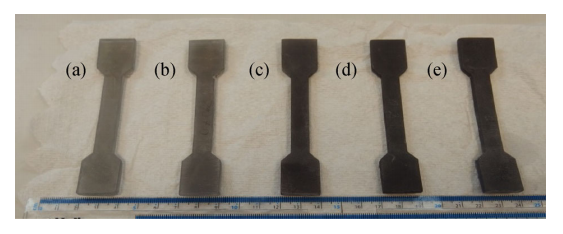Nanocomposites: SLA 3D Printing with Graphene Oxide Elastomers
In ‘GO-modified flexible polymer nanocomposites fabricated via 3D stereolithography,’ authors CHA Tsang, Adilet Zhakeyev, Dennis Y.C. Leung, and Jin Xuan are exploring challenges for creating stronger materials in SLA 3D printing. While graphene oxide and other metals are often used in additive manufacturing processes today, for this study they were integrated into photopolymer resins for the first time.
Composites continue to grow in popularity, giving materials that added boost which may allow a researcher or user on any level to create successful parts or prototypes. ‘Foreign materials’ as an addition can improve properties, with graphene oxide allowing for better mechanical strength as well as impressive conductivity.
Elastomers, plastics exhibiting viscoelastic behavior, encompass a wide range of chemicals, including:
- Polyvinylidene fluoride (PVDF)
- Polyurethanes
- Styrene-butadiene rubber
- Natural rubber latex
- Natural rubber
Graphene oxide (GO) elastomer has been developed in varying research in recent years, combined through:
- Melt mixing
- Solution/latex binding
- In-situ polymerization
- Film processing
Modified elastomers have demonstrated superior mechanical properties over pure elastomers, but challenges arise in creating them due to a ‘complicated synthesis process.’ 3D printing has changed this, but as the authors explain, there is still great progress to be made regarding optimization.
“There are a few reports detailing the marriage between GO coatings and 3D printed elastomers resulting in a practical application,” state the researchers. “However, none of them involve direct 3D printing of GO/commercial elastomer composites.”
There is still a learning curve for most research teams: A suitable solvent for GO dispersion must be chosen. There may be pre-treatments required for resin. And, greater reporting is necessary regarding 3D printing with such composites in SLA.
For this study, the bottom-up SLA approach was used, and once parts were dried, they were cured with UV lighting. Afterward, the researchers finished the samples with polishing.
“For comparison, two pure resin 3D structures were also prepared, with one of them containing no GO and no pre-treatment steps, while another containing no GO but was further treated with chloroform with the steps similar to the GO/resin mixture processing as mentioned above,” explained the authors.
“Tensile stress was calculated as the measured force normalized to the cross-sectional area of the sample, whereas the applied strain was measured as displacement normalized to the gauge length of the sample. Young’s Modulus was calculated as the slope of the normalized stress-strain curve using linear regression of the linear region of the curve.”

Digital image of the 3D structure from pure polymer and GO/Formlabs flexible nanocomposite with different GO concentrations: (a) 0 wt-% GO; (b) 0 wt-% GO after CH3Cl evaporation; (c) 0.1 wt-% GO; (d) 0.2 wt-% GO; (e) 0.3 wt-% GO.
While 3D printed blocks were created with flexible, semi-transparent resins with different GO content, GO-modified SLA printed flexible polymer nanocomposites changed to a dark green color upon resin being combined with raw GO.

(a) and (b) TEM images of raw GO dispersed in chloroform under different magnification; (c,d) corresponding SEM images (Scale bar: (a) 0.2 µm, (b) 100 nm, (c) 10 µm, (d) 1 µm).
“Despite the successful incorporation of GO, both the mechanical strength and stiffness (Young’s Modulus), as well as the elongation of the resulting polymer decreased with the addition of GO. The thermal properties were also adversely affected upon the increase in the GO content based on DSC and TGA results,” concluded the researchers. “It was proposed that the non-uniform dispersion of GO within the SLA resin, causing large GO agglomeration within the 3D printed composites, can significantly change both mechanical and thermal properties of the resulting nanocomposites.
“Further in-depth investigations on effective approaches to achieve uniform GO dispersions in SLA resins, as well as the annealing treatment of the GO/ elastomer nanocomposites for mechanical and thermal enhancements were proposed for future development of 3D printed nanocomposite elastomers.”
Composites are a common focus in many research studies today as users demand greater functionality—and perfection—in 3D printed parts. From conductive polymer nanocomposites to lignin biocomposites to continuous wire polymers, many materials are strengthened for better performance.
What do you think of this news? Let us know your thoughts! Join the discussion of this and other 3D printing topics at 3DPrintBoard.com.
[Source / Images: ‘GO-modified flexible polymer nanocomposites fabricated via 3D stereolithography’]Subscribe to Our Email Newsletter
Stay up-to-date on all the latest news from the 3D printing industry and receive information and offers from third party vendors.
Print Services
You May Also Like
New Business: Temporary, Migratory, & Modular 3D Printed Architecture
If we look at potentially emerging 3D printing businesses, then architecture has not been fully explored. Yes, there is a lot of house 3D printing going on worldwide. From deployable...
3D Printing News Briefs, April 19, 2025: Material Extrusion Standard, Metal Powder, & More
In today’s 3D Printing News Briefs, we’re covering a proposed standard for material extrusion, before moving on to business and metal powder. We’ll end with a commercial store’s robotic 3D...
Japan Unveils World’s First 3D Printed Train Station
Japan is now home to what we believe is the world’s first train station built with 3D printing technology. Located in Arida City, just south of Osaka, the new Hatsushima...
restor3d Raises $38M to Expand 3D Printed Orthopedic Implants
Backed by $38 million in new funding, restor3d is pushing ahead with the launch of four personalized implant lines, set to roll out in 2025 and 2026. This latest venture...


























